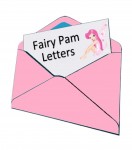-
Introduce each book by discussing the title and pictures.
- This helps children develop prediction skills and to connect with the story.
- The accompanying Learn to Read Comprehension Workbooks provide some suggested questions.
-
Read the key vocabulary in the back of the book.
- It is useful to print off two sets of the vocabulary cards and play games with the cards to help your child learn to automatically recognise the words.
- For different games that can be played with the cards download the Learning Words Games
-
Ask your child to read 6 pages each night
- Regular reading is much more effective than trying to read the book in one sitting.
- Ask your child some questions about the pages that have been read. The accompanying Learn to Read Comprehension Workbooks provide some suggested questions and some comprehension activities.
-
Strategies
- Initially, acknowledge every word that is read correctly by saying, “Yes, great, uh-uh, good…” immediately after the child has read the word. This gives the child the confidence that they have read the word correctly and can safely go onto read the next word. Gradually reduce this feedback as the child’s confidence increases.
- Have your child point to each word being read. This helps develop eye tracking.
- Hold a pencil above the first letter of each word. This helps train the child’s eyes to move from a left to right direction and reduces reversals (e.g., was – saw).
- If the child can’t read a word and the child has the phonic knowledge to decode the word, have the child sound out the word and then blend the sounds to determine the word.
- If the child can’t read a word and the child does NOT have the phonic knowledge to decode the word, then just tell the child the word immediately.
- If the child has seen the word numerous times previously, you can start by just saying the first sound in the word to see if that is a sufficient prompt for him/her to remember the word.
- If your child is distracted by the pictures, let him/her have a quick look and then cover the picture with blank paper. You do NOT want the child guessing words.
-
Complete 2 pages from the accompanying Learn to Read Comprehension Workbook each night.
Some Extra Motivation
We all know the joy of receiving a letter in the mail. The Fairy Pam (targeted at girls) and Pirate Ben (targeted at boys) letters utilise this concept to motivate pre-readers who are about to embark on the Cracking the ABC Code Learn to Read series.
The set consists of 13 letters addressed to your child. Each letter contains vocabulary linked to the Learn to Read series. This vocabulary is highlighted in yellow. The new vocabulary associated with each letter is outlined on the ‘Vocabulary’ sheet. Included in each letter is also a small object, toy or activity (some of these are provided and some you are required to purchase).

If you have any questions or would like to discuss your child or student’s particular literacy problem, please contact Lillian.


